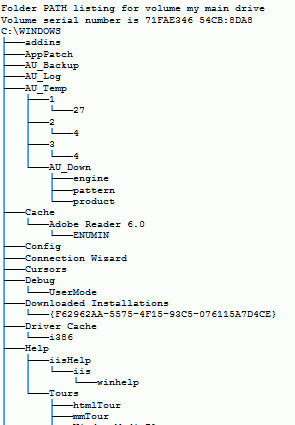TREE: The TREE command graphically
displays the subfolders contained in the folder you point it to, using a tree
structure to show the hierarchy. The '/f' switch for the TREE command will also
display all the files in each folder. You can send the output of the tree
command to a text file by typing: 'tree (your drive and directory) >
mytreefile.txt'
and open it in word (with DOS formatting) for a nice printable directory
list.

NETSTAT:The NETSTAT command can be used to display a wealth of networking
and port information that would otherwise not be available through the Windows
interface without the use of third-party software. Its most vital function
is the ability to show what ports are communicating data or open and listening
for data at any given time.
When used by itself, 'netstat' will display currently
active network connections between your system and any other systems on your network or the Internet. The
'/a' switch shows all current connections along with all open and listening ports.
The '/o' switch shows the process ID which belongs to each connection.
This can be handy for tracking and identifying unwanted software such as spyware
on your system. Use the TASKLIST command to match this process ID to the
processes currently running on your system.

